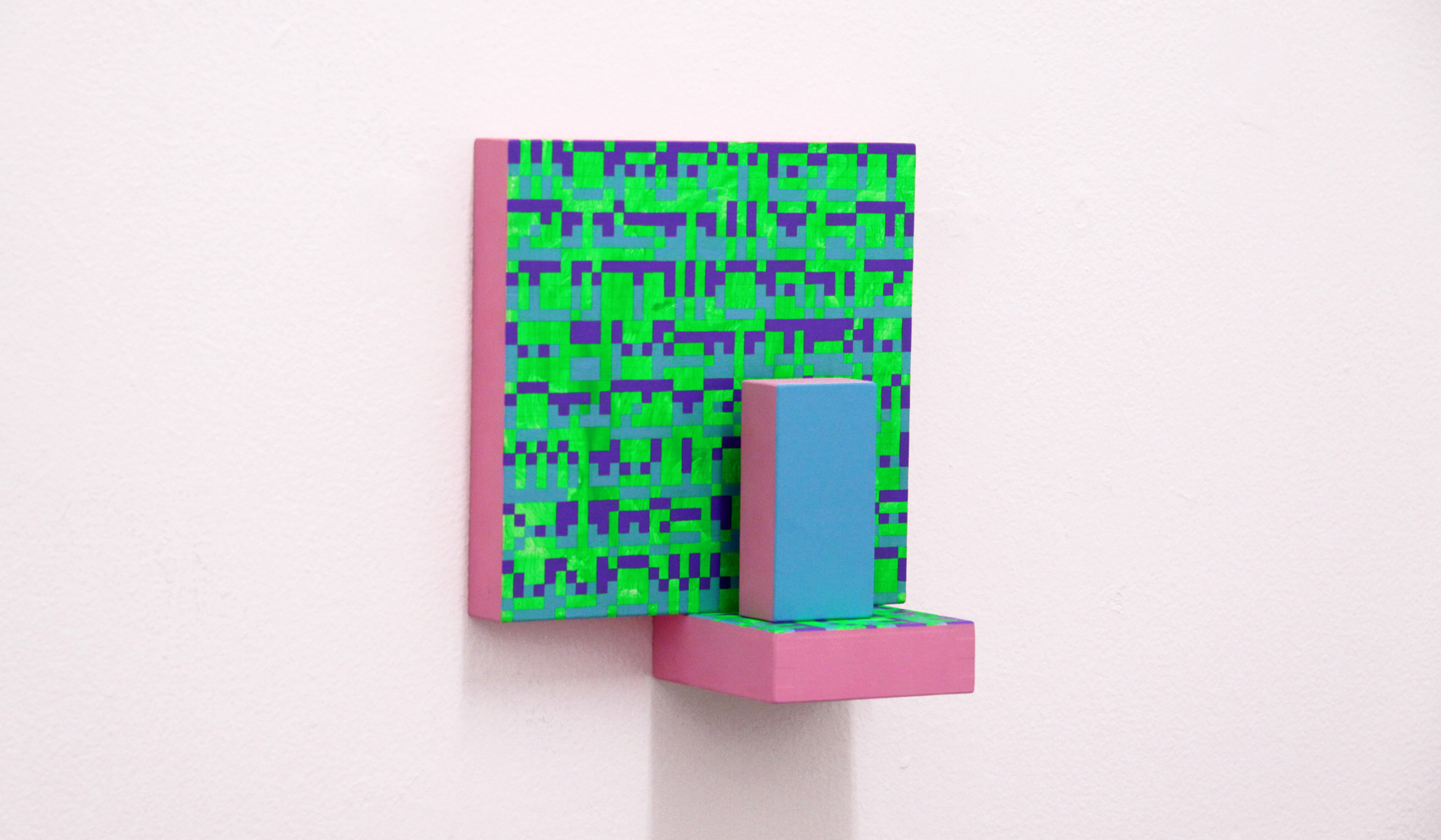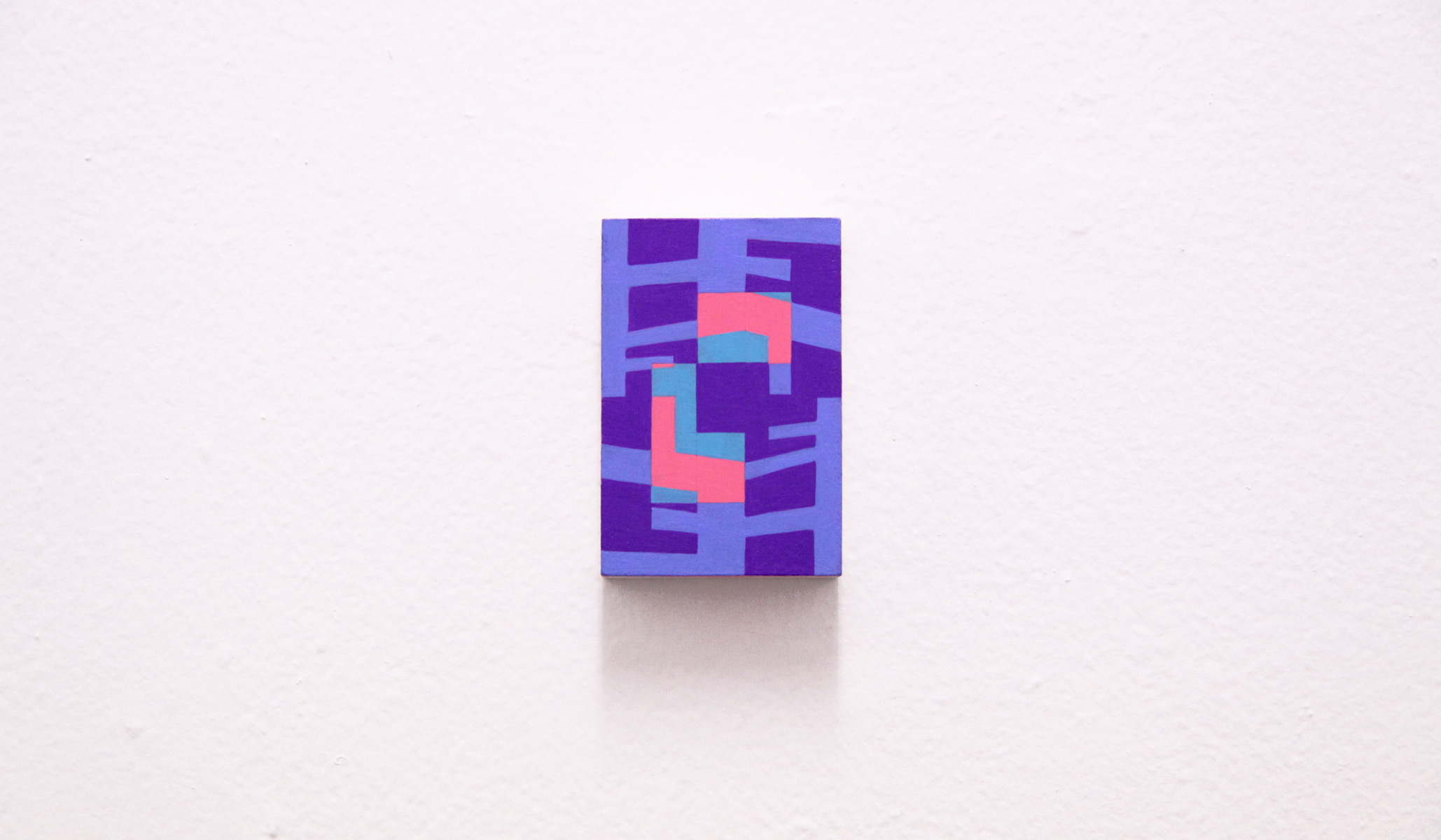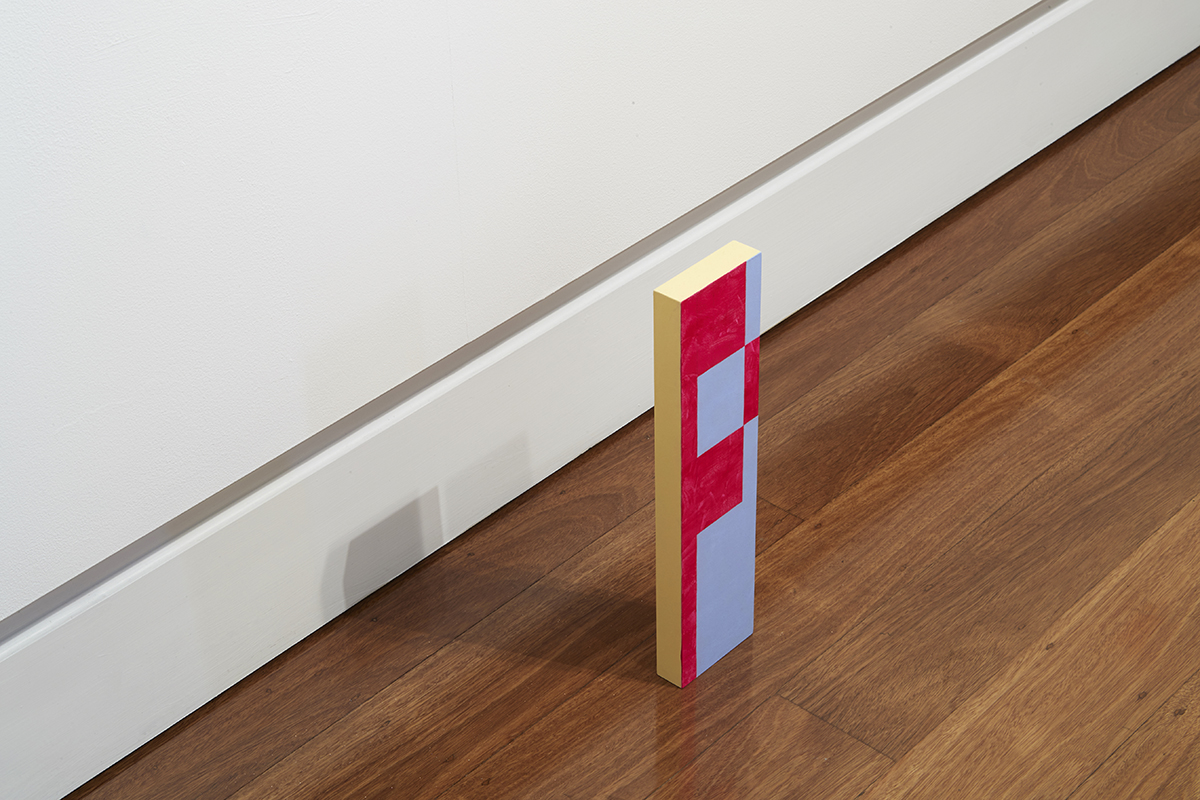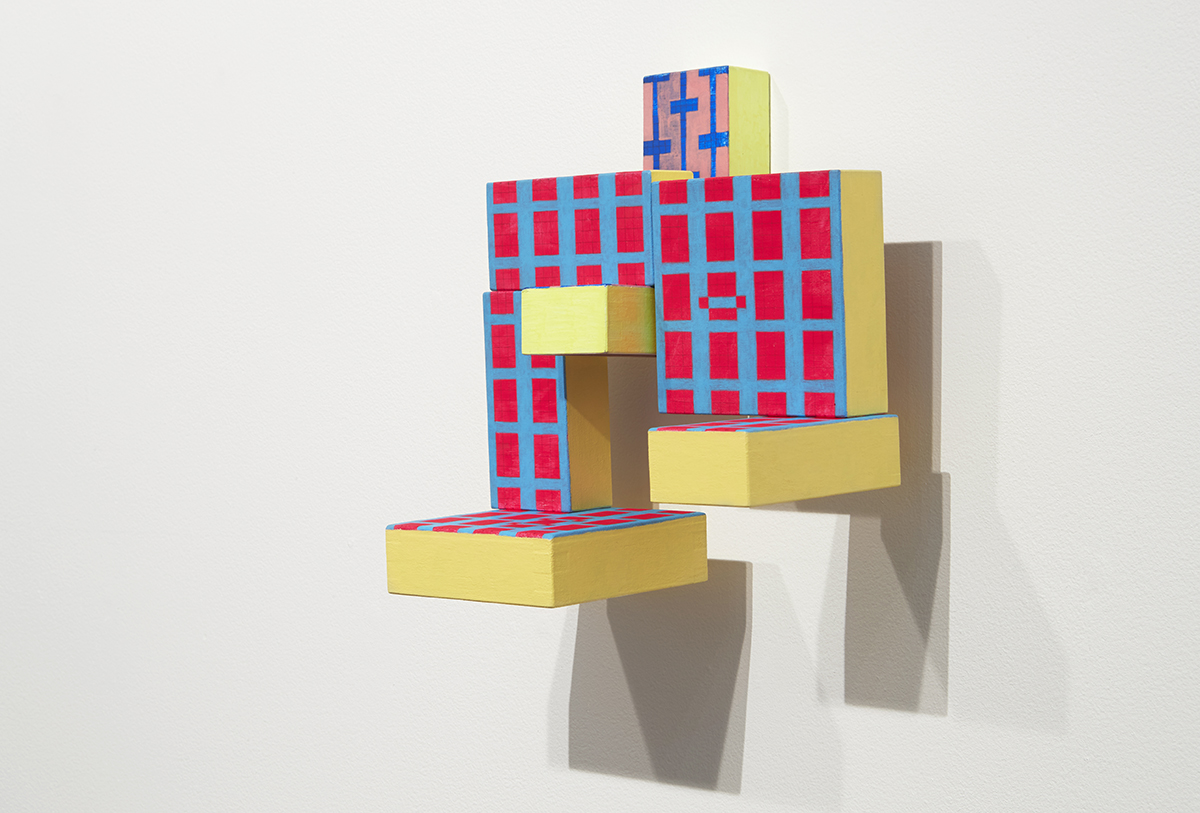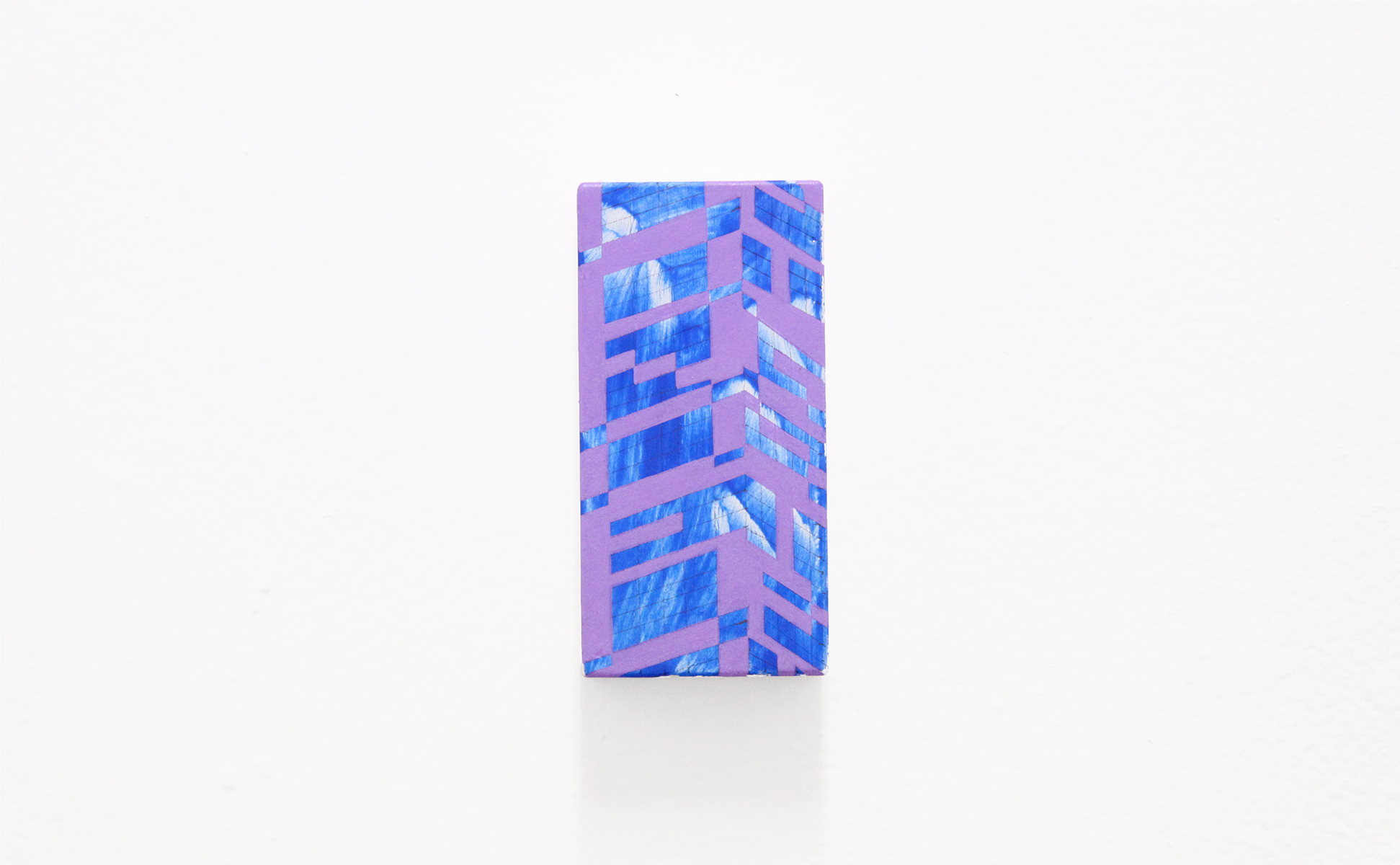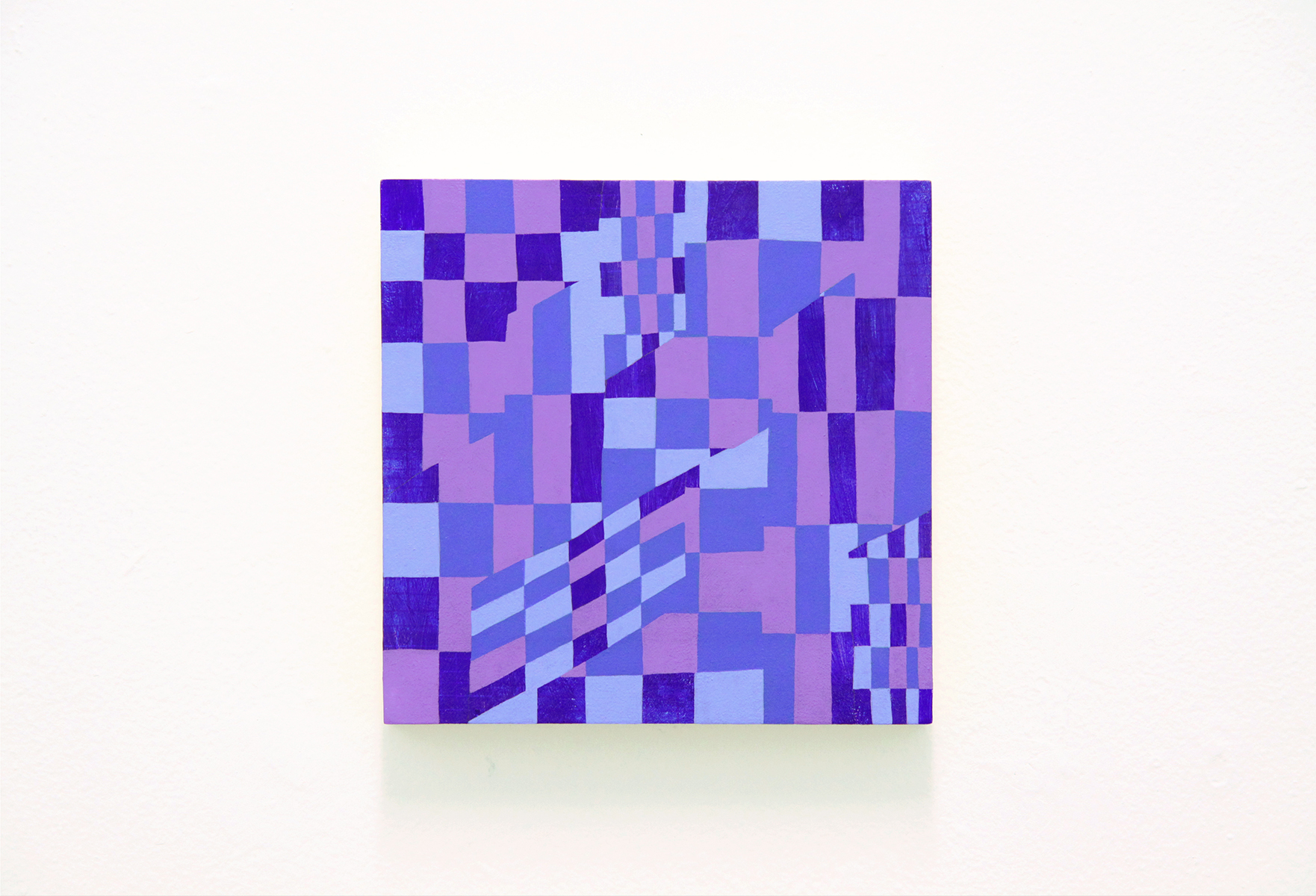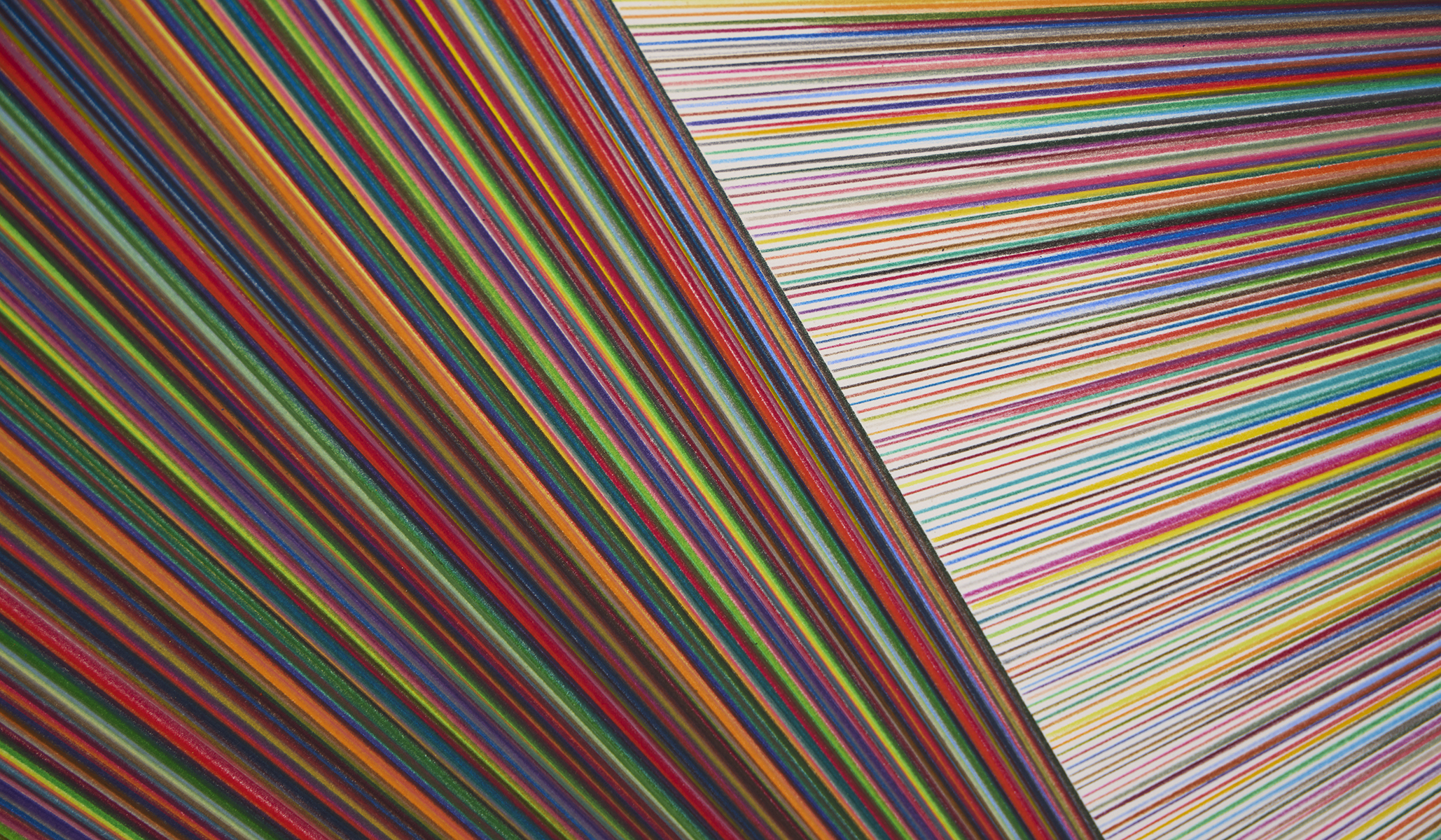Exhibition
When taken at face value, the title of Terrence Combos’ exhibition mga gzegtrvu seems to make no sense. This is because it doesn’t.
“It is a string of letters generated using a substitution cipher known as a Caesar shift. In this type of cipher the source information is processed by shifting each letter a certain number of places down the alphabet (in this case two places). As such, ‘mga gzegtrvu’ translates to ‘key excerpts’.”
Pulled from source material as diverse as Youtube videos, reality television shows, song lyrics and celebrity sound-bites, the quotes which underlie each of Combos’s paintings are often saccharine, tragic and cheesy and yet can be simultaneously read as inspirational and uplifting. Hand-picked by the artist, these pertinent phrases have been processed, transformed and encoded via playful modes of encryption redolent of childhood games and puzzles such as find-a-words.
An example of this process is seen in a series of small paintings dotted throughout the gallery space. Built on a five by five pixel-like grid, each painting presents a single letter, using a reduced typography dictated by the painting’s underlying grid format. Seemingly unconnected, each piece is aesthetically unique and informed by it’s own distinct colour palette. And yet underling each work is a conceptual link, with each painting representing a letter from an acronym that the artist has created out of a quote from Gina
Liano (the ubiquitous star of reality television show The Real Housewives of Melbourne).
In this way, each painting acts as a biblioclastic gesture. Text is found, disrupted, broken up and reassembled. The line between information and misinformation is blurred. Visual clues prompt the viewer to look for text and to believe that it might be present and yet nothing can be easily read or found. Understanding and comprehension cannot quite be grasped.
.
Encoded messages are there to be discovered and yet it is entirely possible that the work will never be correctly interpreted or decoded by anyone except its maker. The content or text behind the work is important to the artist but at the same time it is also just a way of making images. It is a game. A secret puzzle only the artist can ever hope to understand. And even the artist admits to sometimes forgetting the fragments of text that spawned the work…
“I am interested in the possibilities of a relationship between image and text that functions to a mutual disservice. I enact the conflation of language and abstraction to disrupt ideas of language being an economical transaction, and of a purified abstraction not requiring an investment in another discipline. Through this arises an understanding of a painting practice that can be read formally, conceptually and linguistically, although the latter task is met with great challenges.”
Fundamentally, Combos’s paintings prompt multiple readings: they can be seen as symptomatic of our ongoing search for connection and of humankind’s tendency towards using / misusing language to connect. They can be read as an investigation into why we feel the need to clarify, classify and find meaning when looking at an artwork. They can be seen to mirror the way in which images are made and generated in the Internet age. JPEGs, TIFFs, GIFs, ultimately all are digital images generated from coding and text, just like Combos’s paintings.
Read them as you will. There is no one correct reading.
.
Rhianna Walcott
Curator

